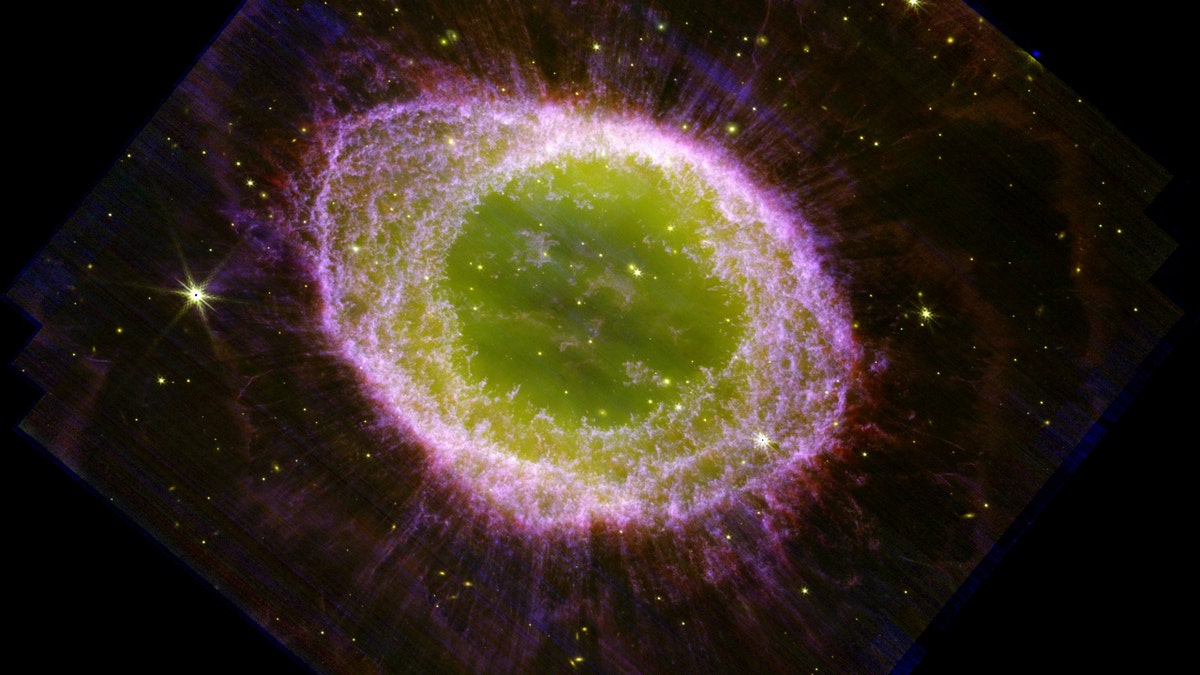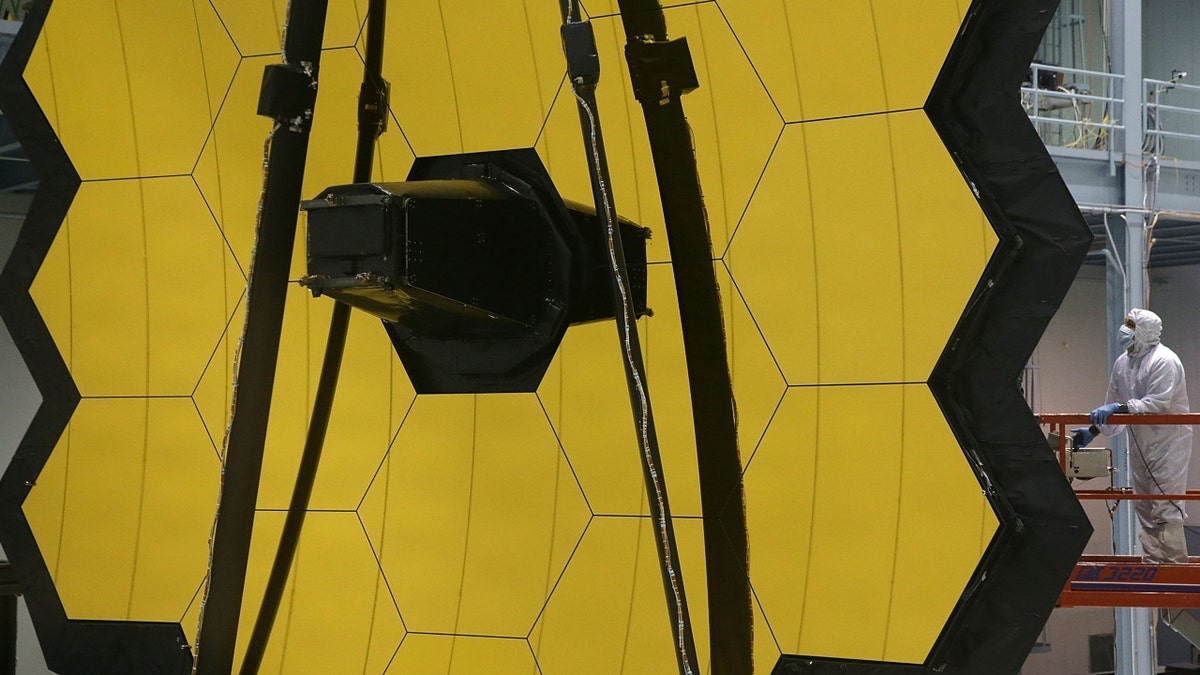The Ring Nebula has been captured in stunning new images by the James Webb Space Telescope.
A team of international astronomers, including three from the Canadian Western University’s Institute for Earth and Space Exploration, released the images on Thursday.
The snapshots provide an unprecedented level of detail of the planetary nebula located in the constellation Lyra.
In addition to showcasing the main ring, halo, and the interior filled with hot gas, the images also reveal the star that ejected the material at the center.
WEBB SPACE TELESCOPE IMAGES REVEAL METALLICITY IN DISTANT GALAXY

The main ring is surrounded by a faint halo and with many delicate structures. The interior of the ring is filled with hot gas. The star which ejected all this material is visible at the very center. It is extremely hot, with a temperature in excess of 100,000 degrees. The nebula was ejected only about 4,000 years ago. (NASA, ESA, CSA, JWST Ring Nebula Team photo; image processing by Roger Wesson)
Researchers estimate that the nebula was ejected approximately 4,000 years ago.
“The James Webb Space Telescope has provided us with an extraordinary view of the Ring Nebula that we’ve never seen before. The high-resolution images not only showcase the intricate details of the nebula’s expanding shell but also reveal the inner region around the central white dwarf in exquisite clarity,” said Mike Barlow, co-lead scientist of the JWST Ring Nebula Imaging Project and an emeritus professor of physics and astronomy at University College London.
Astronomers are using the Ring Nebula to study the formation and evolution of planetary nebulae.

The full field of view imaged with NIRCam, with boxes to indicate the locations of fields. Region A shows the central star; region B highlights the thousands of dense clumps in the main ring; region C shows the radial “stripes” which appear in the outer halo; and region D shows wisps of gas still further out. (NASA, ESA, CSA, JWST Ring Nebula Team photo; image processing by Roger Wesson)
WEBB SPACE TELESCOPE TAKES STUNNINGLY DETAILED INFRARED IMAGE OF ACTIVELY FORMING STARS
“We are witnessing the final chapters of a star’s life, a preview of the sun’s distant future so to speak, and JWST’s observations have opened a new window into understanding these awe-inspiring cosmic events,” said Barlow.
The Ring Nebula, located approximately 2,600 light-years from Earth, formed when a dying star expelled its outer layers into space.

The James Webb Space Telescope during assembly at NASA’s Goddard Space Flight Center in Greenbelt, Maryland. (Alex Wong/Getty Images)
Astrophysicist Jan Cami from Western University explains that the various shapes and patterns seen in nebulae are a result of complex physical processes that are not yet fully understood.
CLICK HERE TO GET THE FOX NEWS APP
The layers of the nebula are illuminated by radiation from the central star, and the emission of light from specific colors by the nebula’s chemical elements allows researchers to study their chemical evolution.
“These images are not only visually appealing but also offer significant scientific insights into the processes of stellar evolution. By studying the Ring Nebula with the James Webb Space Telescope, we hope to gain a deeper understanding of the life cycles of stars and the elements they release into the universe,” said Nick Cox, co-lead scientist of the JWST Ring Nebula Imaging Project and a member of ACRI-ST.













